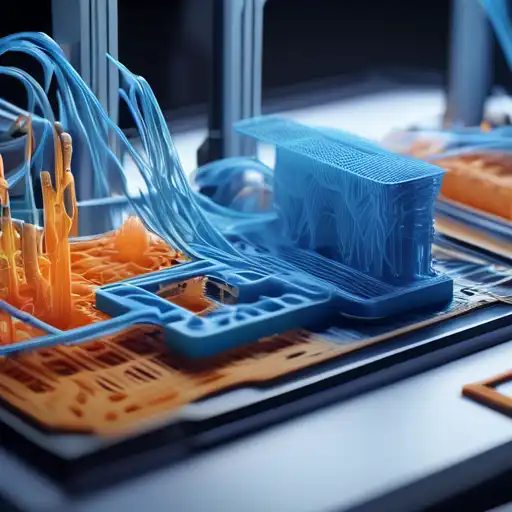Introduction to 3D Printing
3D printing, also known as additive manufacturing, is revolutionizing the way we create objects. From prototyping to full-scale production, this technology allows for the creation of complex designs with unprecedented precision. In this article, we explore how 3D printing is shaping the future, layer by layer.
The Process of 3D Printing
At its core, 3D printing involves building objects from the ground up, one layer at a time. This process begins with a digital model, which is then sliced into thin layers by specialized software. The printer then follows these slices to deposit material, such as plastic, metal, or even concrete, until the object is fully formed.
Types of 3D Printing Technologies
- Fused Deposition Modeling (FDM): The most common type, using a thermoplastic filament.
- Stereolithography (SLA): Uses a laser to cure liquid resin into hardened plastic.
- Selective Laser Sintering (SLS): Fuses powdered material using a laser.
Applications of 3D Printing
3D printing is not just for prototypes. It's being used in various industries, including healthcare for prosthetics, aerospace for lightweight parts, and even in fashion for customizable clothing. The possibilities are endless, and as the technology advances, so too will its applications.
Benefits of 3D Printing
- Customization: Products can be tailored to individual needs without additional costs.
- Speed: From design to production, 3D printing significantly reduces lead times.
- Sustainability: Additive manufacturing produces less waste than traditional methods.
The Future of 3D Printing
As 3D printing technology continues to evolve, we can expect to see its impact grow. Innovations in materials and processes will open up new possibilities, making 3D printing a cornerstone of future manufacturing and design. The potential for customization, efficiency, and sustainability makes it a key player in the fourth industrial revolution.
For those interested in exploring 3D printing further, consider checking out our technology section for more insights into how it's changing the world.
Conclusion
3D printing is more than just a technological advancement; it's a paradigm shift in how we think about manufacturing and design. By enabling the creation of complex, customized, and sustainable products, 3D printing is indeed creating the future, one layer at a time.
